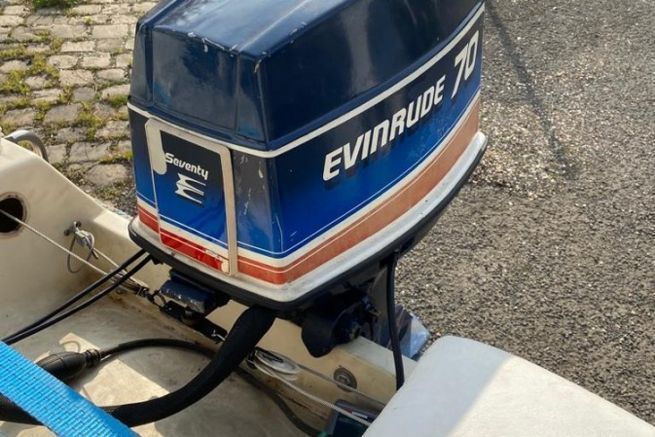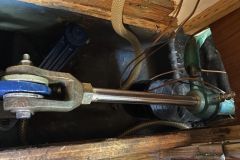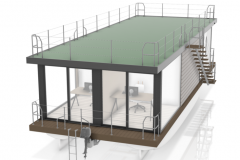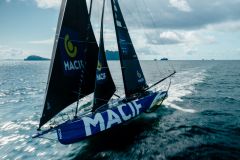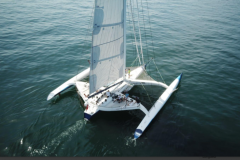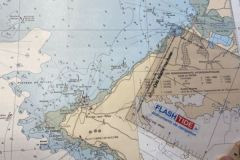Boats with inboard motors, both powerboats and sailboats, have a rudder, often placed just behind the propeller. It is this rudder that will be used to steer the boat. For the specific case of outboard motors and Z-drives in both cases, the motor (or baseplate) pivots to act as a rudder. In both cases, a system is needed to connect the steering wheel (or tiller) to the rudder or motor to turn it. This is called the steering system.
There are four types of management:
- Cable or stick steering
- Rack and pinion steering, push-pull type
- Hydraulic steering
- Electric (and electro-hydraulic) steering
Cable or stick steering
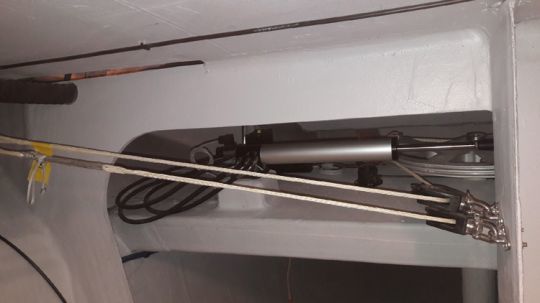
Behind the steering wheel is a sort of "spool" on which a cable (called a crosshead) is wound. When the steering wheel is turned, it is wound up on one side and unwound on the other. A set of pulleys connects it to the rudder and acts on the rudder quadrant, a portion of the disk attached to the top of the rudder. To work properly, the whole system must be under tension to avoid play. The adjustment of the cables is done with turnbuckles.
Often the "spool" behind the steering wheel is replaced by a toothed wheel on which a chain runs. The sprockets are attached to both ends of the chain. This chain avoids the risk of slipping on the "spool".
With the advent of "modern" ropes, cable ropes are often replaced by textile.
Advantage:
- Sensation at the helm, helm return (useful for a sailboat)
Disadvantages:
- Circulation of the pulleys (return pulleys) sometimes complex
- Wear and tear of the brushes
Rack and pinion steering, push-pull type
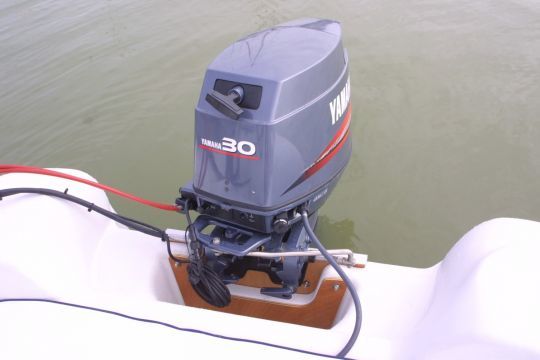
This time, the cable connecting the steering wheel to the rudder (or motor) is a single cable installed in a sheath, called a push-pull cable. Turning the steering wheel pulls or pushes the cable, which acts directly on the end of the shaft. This solution is very popular on small outboard motors (less than 50 hp). It is easy to implement and requires only one cable to run through the boat.
Advantage:
- A single cable
Disadvantages:
- The cable does not allow tight bends (passage through partitions)
- Mandatory maintenance (lubrication)
Hydraulic steering
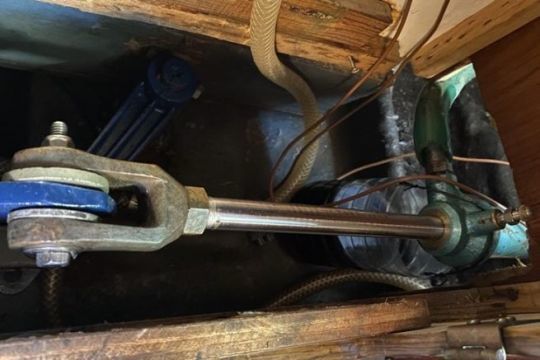
On a hydraulic steering system, a cylinder is used to move the rudder (or engine). It is driven by fluid (hydraulic oil). A hose system connects it to the steering wheel, which is a hand pump. When you turn the steering wheel, you act on pistons that compress the oil and send it to the cylinder. This circuit is closed. There's one way in and one way out and a constant amount of oil in the system.
The steering wheel can be installed anywhere in the boat, provided that the hoses are routed. This solution is also suitable if several steering positions are required in the boat. In order to withstand the torque of high power, non-return valves prevent the oil from flowing backwards.
Benefits:
- No effort to hold the bar (no return)
- Possibility to size the cylinder according to the motor torque
- Easy circulation of hydraulic hoses in the boat
Disadvantage:
- No steering feel (for sailboats)
Electric (and electro-hydraulic) steering
Electric steering can be either 100% electric (with an electric cylinder) or an electro-hydraulic combination (the cylinder is hydraulic, but the pump is electric). On an electric steering system, the steering wheel has sensors that send an electrical signal via a simple wire. In the rear of the boat, this signal is used by the electric cylinder (or the hydraulic pump) to act on the motor.
These steering systems are very flexible and comfortable. The installation is limited to a simple wire to run in the boat. You can also install several steering wheels on the same boat. Some outboard motor manufacturers include the electric cylinder directly in their motor for easy installation.
Advantage:
- Easy to install
Disadvantage:
- High equipment prices

